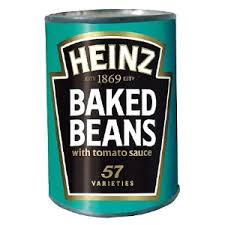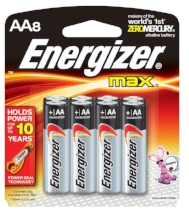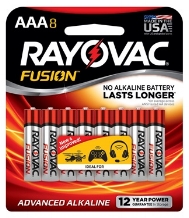Energizer Settles Trade Dress and Trademark Infringement Dispute with Rayovac - Bunny Fight with Duracell Continues
Energizer filed suit against Berkshire Hathaway owned Duracell last February, however, it settled its dispute with Rayovac against which it alleged trade dress infringement and dilution among the claims in less than two months.
Since becoming a practicing attorney, I have been asked more than a few times to explain the difference between trade dress and trademarks. Quite frankly, it is not the easiest concept to understand. I have found that people seem to grasp the overall concept, however, they get lost in a sea of confusion once the discussion gets into the details on product packaging versus product design, and inherent distinctiveness versus acquired distinctiveness requirements for trade dress.
Interestingly, a case recently came to my attention that has proven to be a breakthrough in providing a visual element that illustrates the concept of product packaging trade dress. In general terms, product packaging tends to be an easier type of trade dress to protect and enforce than product design.
Trade dress is essentially an overall visual impression created by the packaging or design of a product, and functions the same as a word trademark. It may encompass the shape, color, size, texture, or sales techniques of a product or service. If you have ever pounded the 57 on the side of a glass Heinz 57 ketchup bottle, or enjoyed a bowl of Campbell's chicken noodle soup on a cold winter day, then you have almost certainly noticed the distinctive trade dress in addition to the individual trademarks embedded within the packaging of both of these products.
Heinz most certainly acquired distinctiveness in its trade dress packaging for ketchup long ago. Campbell's Soup has a trade dress of its own, and the can in the picture above encompasses three other unique trade dress designs in Nintendo owned Mario, Luigi and Princess Peach.
Energizer and Rayovac settled their differences last week, however, the case presents several interesting elements that further explain how courts interpret whether one trade dress is 'too' similar to another. Below, I will examine several of the factors that the Eighth Circuit Court of Appeals has articulated as acceptable for evaluating trademark infringement (See SquirtCo v. Seven-Up Co., 628 F.2d 1086 (C.A.8 (Mo.), 1980)).
Trade dress itself has its own standard for determining product packaging versus product design, however, every single dispute involving two competing trademarks, no matter the court, is based around evaluating whether there is a likelihood of confusion between the two marks.
It is important to note that the four factors which I examine below are not exhaustive and no factor is dispositive, however, any one factor can weigh more heavily in any case.
Strength of the Plaintiff's Trademark
Energizer claimed its trade dress had "acquired invaluable goodwill, recognition, and secondary meaning among retailers and consumers." Proving this to the degree needed to convince a court of law can be challenging. Simply showing advertising dollars and survey data is not enough. The scientific manner in which the data is collected is just as important as the results themselves.
The Similarity Between the Plaintiff's and Defendant's Trademarks
Energizer claimed that Rayovac intentionally sought to mimic its trade dress. While there are some striking similarities, there are also numerous distinctions as well. These include graphical location, color variation, and elements present in one packaging and not the other. The court is primarily concerned with the opinion of the general consuming public. In addition, the more scientific the evidence of actual confusion, the more likely a court is to give credence to that data.
The Competitive Proximity of the Parties' Products
Not only are both brands of batteries sold in the same stores, they are often displayed on the same aisle within inches of each other. This particular factor can involve a less intensive process to prove, and when combined with evidence of actual confusion, can provide significant support to a party alleging trademark or trade dress infringement.
The Degree of Care Reasonably Expected of the Plaintiff's Potential Customers
Batteries are typically a low cost purchase made without much research and picked up by consumers on an impulse when seen in a store. Accordingly, most consumers will not exercise a great degree of care when purchasing these products, thereby exacerbating the chance of there being a likelihood of confusion.
While the scales in this case may tend to weigh more heavily towards one side, it is clear that a long drawn out litigation is not good for either party. As in many other infringement actions, cooler heads have prevailed and agreed upon a suitable out of court resolution. On the other hand, Energizer's lawsuit with Duracell keeps going and going…






